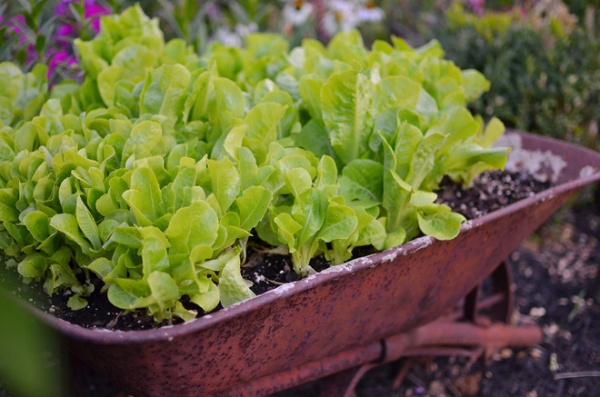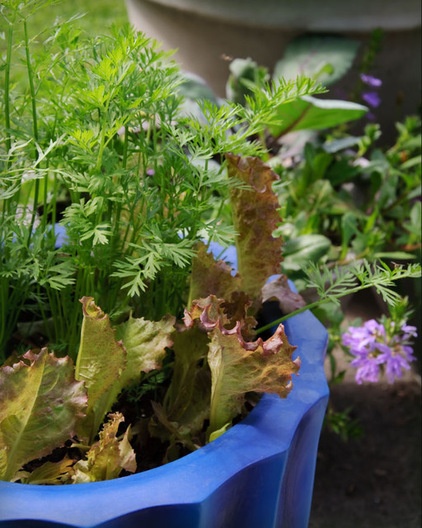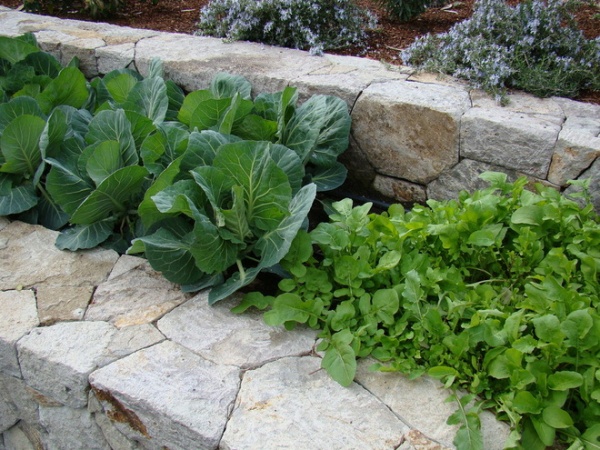Cool-Season Vegetables: How to Grow Lettuce
Lettuce is more than the iceberg variety of diner dinner salads. In fact, even iceberg lettuce (also known as crisphead) is no longer that familiar. The lettuce family is huge and rapidly growing. Lettuce itself is still a standard for salads, but it can also be added to sandwiches, used as a wrap for a filling or cooked. (Look for darker leaves to get the most nutrition out of the leaves.) And despite its prevalence in summer salads, it is a true cool-season crop.
Lettuces are generally divided into four different types:
Leaf lettuces are easy to grow and quick to mature; you may have greens as early as a month after planting. They’re also pretty in the garden, with leaves ranging in color from bronze to red to dark green. Butterhead lettuces are small and cream colored, with a delicate flavor. Romaine or cos lettuce varieties are upright rather than round and spreading. Crisphead lettuces are the familiar iceberg varieties and Batavian lettuces, which resemble a blend of iceberg and leaf lettuces. They tolerate heat the best, but iceberg varieties in particular can bolt quickly.Within all of these groups, there are different rates of maturity and levels of heat tolerance. Look for lettuces that will do well in your climate.

When to plant: For spring crops, sow seeds or set out seedlings in early spring. (See thinning recommendations for spacing.) Continue to sow or transplant every couple of weeks so you’ll have a continuous crop, keeping in mind that unless the garden is shaded, temperatures above about 75 degrees will cause lettuce plants to bolt (flower and set seed). Start up again in late summer or fall, once the soil temperature has cooled. In cold-winter climates, plan your harvest so you’ll have lettuce until the first frost. In mild-winter climates, you can continue to sow or transplant through the winter.
Days to maturity: 30 to 90
Light requirement: Sun to partial shade; to prevent it from bolting early, plant where other plants can shade it.
Water requirement: Provide regular, consistent water; the soil should stay moist.
Favorites:
Batavian: Cherokee, Nevada, SierraButterhead: Bibb, Buttercrunch, Deer' s Tongue, Marvel of Four Seasons, Rouge d’Hiver, Sangria, Tom Thumb, Winter MarvelCos: Blushed Butter Cos, Crisp Mint, Little Gem (a dwarf variety), Parris Island, Parris WhiteCrisphead: Great Lakes, Red Iceberg, Reine de Glace, SummertimeLeaf: Australian Yellow, Black Seeded Simpson, Lolla Rossa, Oak Leaf, Red Sails, Red Salad Bowl, Salad Bowl

Planting and care: Sow seeds in rows about 1/8 to 1/4 inch deep or by broadcasting; cover lightly with soil. Thin leaf lettuces to about 1/4 to 3/4 of a foot apart. Butterhead and romaine lettuces should be 6 to 8 inches apart. Crispheads need the most space; allow at least a foot.
Fertilize the soil when you plant and about a month and a half later. Keep the soil consistently moist and weed carefully around the plants. Pests and diseases are usually not a problem, but some of the usual suspects aphids, leaf miners, snails, mildew and wilt — as well as birds, deer and rabbits can make inroads on your crop.

Harvest: Though you usually see heads of lettuce for sale in groceries and at markets, you can harvest individual leaves of leaf, romaine and Batavian lettuces. In fact, a common method is to sow a mix of these seeds, allow them to grow, then cut leaves off about 1/2 inch above the crown. They’ll quickly regenerate, and you’ll have an ongoing source for lettuce. You can also eat the thinnings and young leaves of butterhead and iceberg lettuce, then wait until the entire head forms and harvest the entire plant.
More:
How to grow arugula and other salad greens












